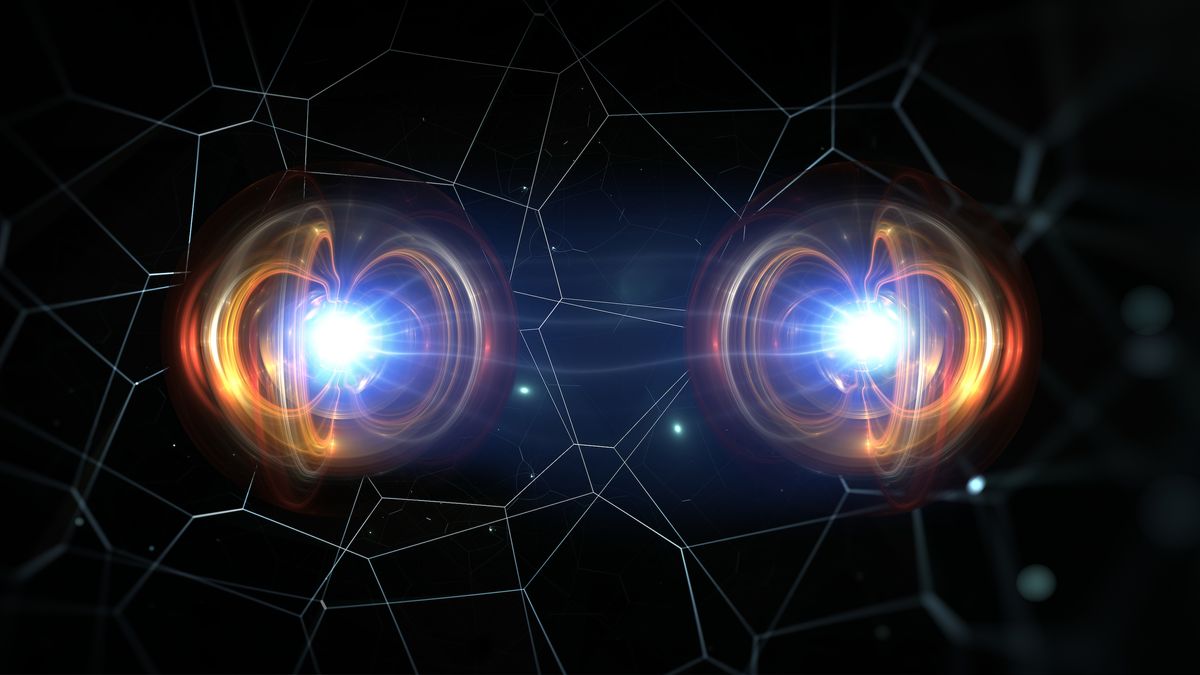'Spooky' quantum entanglement discovered inside individual protons for 1st time ever
- Get link
- X
- Other Apps
Physicists have long-suspected that the building blocks of protons experienced quantum entanglement. Now, researchers have the first direct evidence — after using a trick to infer subatomic particles' entropy.

Scientists have peered inside protons and discovered that quarks and gluons, their fundamental building blocks, experience quantum entanglement.
Entangled particles are connected to each other, so that a change to one instantaneously causes a change to the other, even if they are separated by vast distances. Albert Einstein famously dismissed the idea as "spooky action at a distance," but later experiments proved that the bizarre, locality-breaking effect is real.
Physicists have observed entanglement between quarks before but had never found evidence that they exist in a quantumly connected state inside protons.
Now, a team of researchers has discovered entanglement between quarks and gluons inside protons over a distance of one quadrillionth of a meter — allowing the particles to share information across the proton. The researchers published their findings Dec. 2, 2024 in the journal Reports on Progress in Physics.
"For decades, we've had a traditional view of the proton as a collection of quarks and gluons, and we've been focused on understanding so-called single-particle properties, including how quarks and gluons are distributed inside the proton," study co-author Zhoudunming Tu, a physicist at Brookhaven National Laboratory in Upton, New York, said in a statement. "Now, with evidence that quarks and gluons are entangled, this picture has changed. We have a much more complicated, dynamic system."
'Spooky action' at the smallest scale
Experimental proof of quantum entanglement first emerged in the 1970s, but many aspects of the phenomenon remain relatively unexplored — including the entangled interactions between quarks. This is mainly because the subatomic particles don't exist on their own and instead fuse into various particle combinations known as hadrons. For example, baryons, such as protons and neutrons, are combinations of three quarks bound tightly together by strong force-carrying gluons.
Global Particle Physics Excellence Awards
- Get link
- X
- Other Apps
Comments
Post a Comment